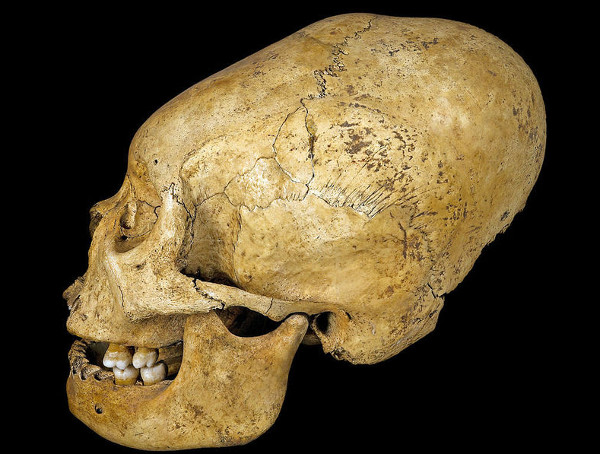The custom of extending the skull of the South American tribe
To prolong the skull, the Patagonian people who lived 2,000 years ago in South America tied the cloth around the child's head or pressed their heads with wooden planks.
Learn the custom of extending the skull of the ancient Patagonia
In 2009, a group of archaeologists found deformed skulls in burial sites dating back 2,000 years in Patagonia, South America.
Marta Alfonso-Durruty, an anthropologist at the University of Kansas, Manhattan, USA, was invited to the Research Institute of Patagonia, Chile, to find out. When Alfonso-Durruty arrived, she discovered 18 (30%) of the 60 adult skulls were prolonged, the BBC reported.

The deformity of the skull is very common in prehistoric tribes living in the central Andes mountains, South America.(Photo: Didier Descouens).
According to Alfonso-Durruty and colleagues' research, instead of affecting the skull during adulthood, ancient Patagonian people sought to prolong the skull in early childhood , when the bones were still soft enough to shape.
To deform the shape of the child's skull, the father or mother tied the head of the baby with cloths. This makes the skull grow upwards in a cylinder. However, if the fabric is too tight, the child may die. Another way to create a flat skull is to use hardwood boards to squeeze the front and back of the head for a long time.
Alfonso-Durruty said that the ancient Patagonia did not deform the skull to show community characteristics, but to expand its territory and access new resources. She presented this statement in the September issue of the American Journal of Natural Anthropology.
Ancient Patagonian people live in areas with uneven resources."In that case, the most logical solution is to expand the network so that tribes can access different resources along the territory," Alfonso-Durruty said.

Extending the skull is the way the ancient Patagonian built the bond between the tribes.(Photo: Didier Descouens).
The best way to expand is to make friends with other tribes. Because the skull shape changes were not easy, those who carried out this process immediately showed that they were a reliable tribe."As a result, prolonging the skull helps them to communicate with individuals in other regions," Alfonso-Durruty said.
This practice even helped them expand their tribes. 2,000 years ago, the region experienced a surge in population. Through an analysis of the diet of ancient Patagonian people, the team found that they ate both food on the ground and food at sea, indicating they had lived in different regions.
- The custom of the African tribe's scary children's head carving
- The peculiar custom of the tribe turns the body into ... crocodile
- The custom of marriage
- Perverted customary burial of children in the trunk
- Legendary legend 'Crystal skull'
- Mysterious skull surgery 2300 years ago
- American heads are getting bigger and bigger
- Impressive photos of the tribes that are about to disappear forever in the world
- Tribe naked and customary eating human flesh, using skulls to make cups
- Where men are considered virgin if they are over-tall
- The unexpected outcome of the tribe that once dominated the earth
- The African tribe still lives like 44 thousand years ago
 'Fine laughs' - Scary and painful torture in ancient times
'Fine laughs' - Scary and painful torture in ancient times The sequence of numbers 142857 of the Egyptian pyramids is known as the strangest number in the world - Why?
The sequence of numbers 142857 of the Egyptian pyramids is known as the strangest number in the world - Why? History of the iron
History of the iron What is alum?
What is alum? Mysterious Skull Island: A place where tourists can only see but not set foot
Mysterious Skull Island: A place where tourists can only see but not set foot  Uncovering the Unknown Body Parts of the Largest Beast on Every Continent
Uncovering the Unknown Body Parts of the Largest Beast on Every Continent  Revealing the face of a Neanderthal woman 75,000 years ago
Revealing the face of a Neanderthal woman 75,000 years ago  Restored portrait of astronomer Copernicus
Restored portrait of astronomer Copernicus  Stunning photos of animals through X-rays
Stunning photos of animals through X-rays  Unknown human body part discovered: 'Tunnel' in the brain
Unknown human body part discovered: 'Tunnel' in the brain 